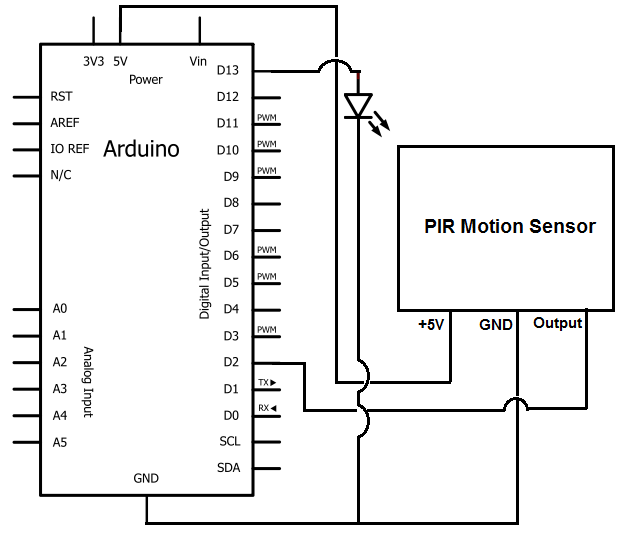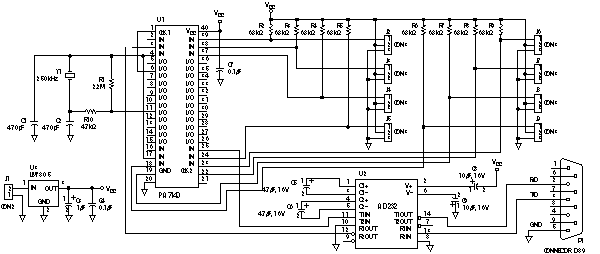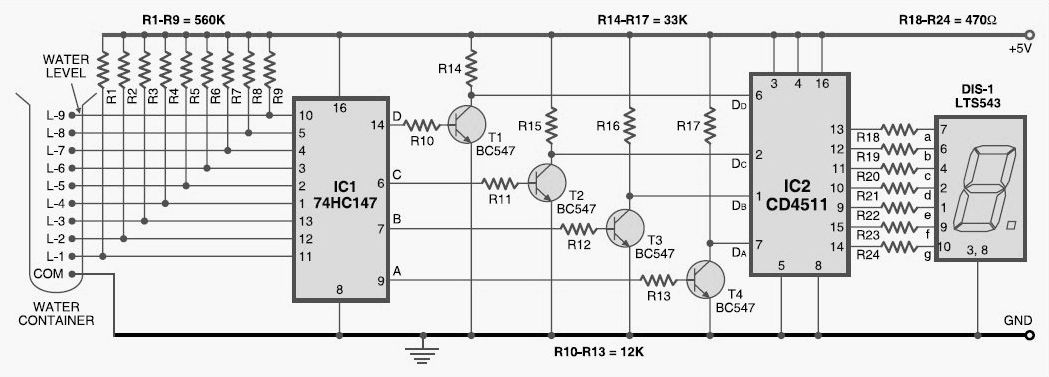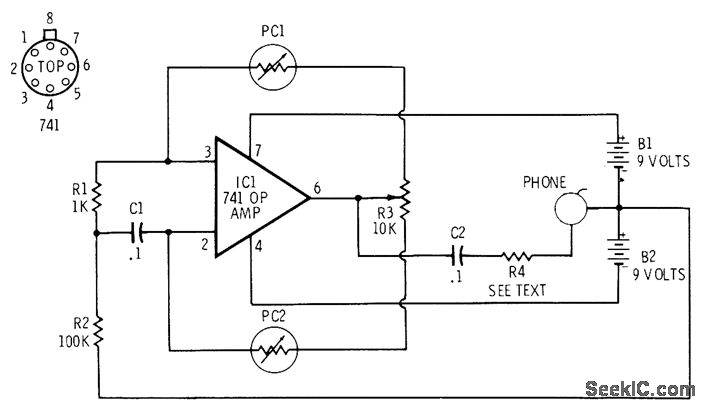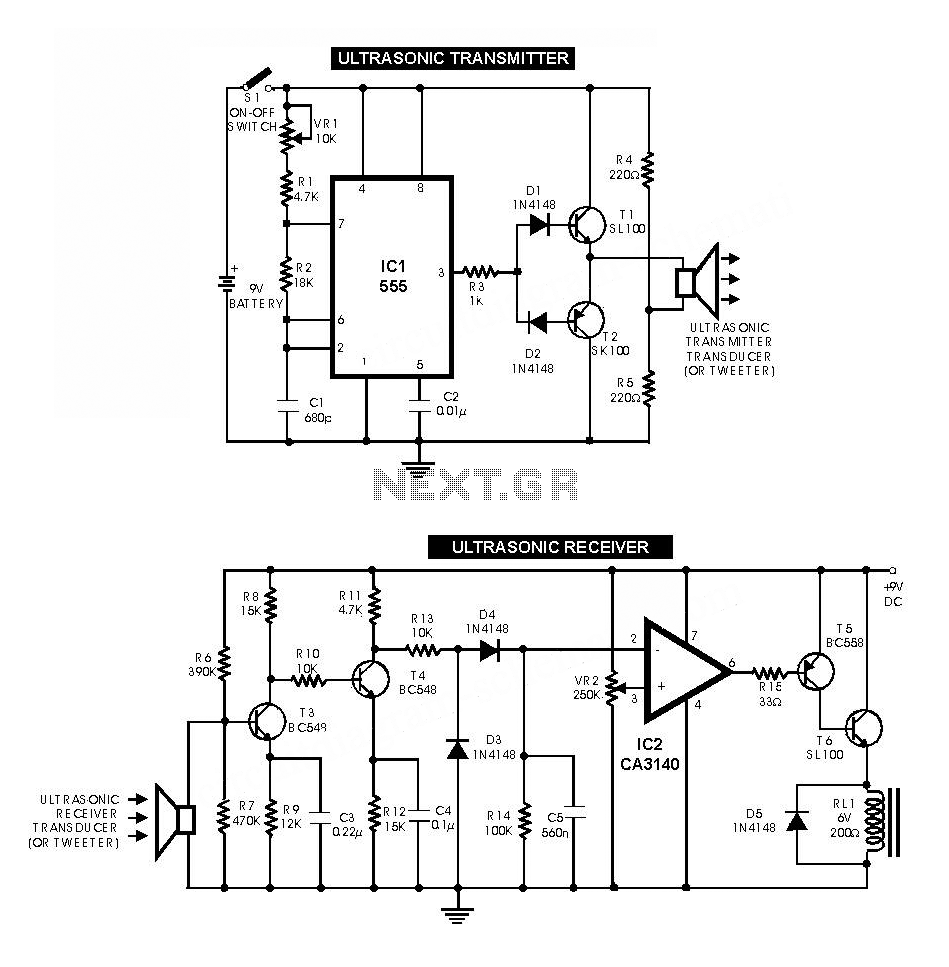
Unidirectional motion sensor
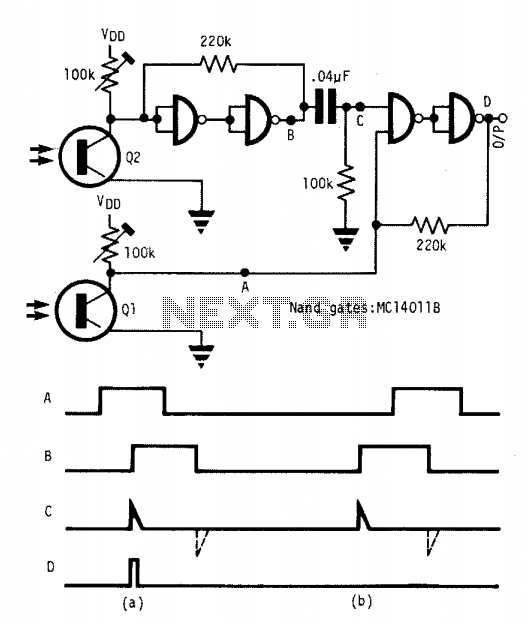
This circuit detects an object passing in one direction while ignoring it in the opposite direction. Two sensors determine the direction of movement. When an object approaches, it first blocks the light to phototransistor Q1 or Q2, depending on the direction. If the object passes Q1 before Q2, an output pulse is generated at D; however, no pulse is produced at D if the object passes Q2 before Q1. The length of the object, measured along the line of the two sensors, must be greater than the distance separating Q1 and Q2.
This circuit employs two phototransistors, Q1 and Q2, positioned at a defined distance apart to create a directional sensing mechanism. The operational principle relies on the interruption of light beams directed toward each phototransistor. When an object approaches the sensors, it will first obstruct the light reaching either Q1 or Q2, depending on the direction of movement.
For instance, if an object moves from left to right, it will first block the light from reaching Q1. This action triggers Q1 to switch from an off state to an on state, generating a voltage change that is detected by the circuit. As the object continues moving and subsequently blocks the light to Q2, a second voltage change occurs, which is processed to output a pulse at D. This pulse signifies the detection of an object moving in the intended direction.
Conversely, if the object moves from right to left, it will first block the light reaching Q2, causing it to activate before Q1. Since the circuit is designed to only recognize the pulse generated when Q1 is triggered before Q2, no output pulse is generated at D in this scenario.
The requirement that the object’s length must exceed the distance between Q1 and Q2 ensures that the sensors do not trigger simultaneously, which would lead to ambiguous readings. This length requirement guarantees that the object will always trigger Q1 before Q2 when moving in the correct direction, thereby ensuring reliable operation of the circuit.
The design can be utilized in various applications, such as automated counting systems, security alarms, or any scenario where directional movement detection is essential. By fine-tuning the sensitivity of the phototransistors and adjusting the distance between them, the circuit can be optimized for different object sizes and environmental conditions.This circuit detects an object passing in one direction but ignores it going the opposite way. Two sensors define the sense of direction. The object blocks the light to phototransistor Ql or Q2 first dependent on the direction of approach. When the object passes Ql then Q2, an output pulse is generated at D; while no pulse is seen at D as the object passes Q2 then Ql.
Object length (measured along the direction of the two sensors) should be greater than the separation of the two sensors Ql and Q2. 🔗 External reference
This circuit employs two phototransistors, Q1 and Q2, positioned at a defined distance apart to create a directional sensing mechanism. The operational principle relies on the interruption of light beams directed toward each phototransistor. When an object approaches the sensors, it will first obstruct the light reaching either Q1 or Q2, depending on the direction of movement.
For instance, if an object moves from left to right, it will first block the light from reaching Q1. This action triggers Q1 to switch from an off state to an on state, generating a voltage change that is detected by the circuit. As the object continues moving and subsequently blocks the light to Q2, a second voltage change occurs, which is processed to output a pulse at D. This pulse signifies the detection of an object moving in the intended direction.
Conversely, if the object moves from right to left, it will first block the light reaching Q2, causing it to activate before Q1. Since the circuit is designed to only recognize the pulse generated when Q1 is triggered before Q2, no output pulse is generated at D in this scenario.
The requirement that the object’s length must exceed the distance between Q1 and Q2 ensures that the sensors do not trigger simultaneously, which would lead to ambiguous readings. This length requirement guarantees that the object will always trigger Q1 before Q2 when moving in the correct direction, thereby ensuring reliable operation of the circuit.
The design can be utilized in various applications, such as automated counting systems, security alarms, or any scenario where directional movement detection is essential. By fine-tuning the sensitivity of the phototransistors and adjusting the distance between them, the circuit can be optimized for different object sizes and environmental conditions.This circuit detects an object passing in one direction but ignores it going the opposite way. Two sensors define the sense of direction. The object blocks the light to phototransistor Ql or Q2 first dependent on the direction of approach. When the object passes Ql then Q2, an output pulse is generated at D; while no pulse is seen at D as the object passes Q2 then Ql.
Object length (measured along the direction of the two sensors) should be greater than the separation of the two sensors Ql and Q2. 🔗 External reference
